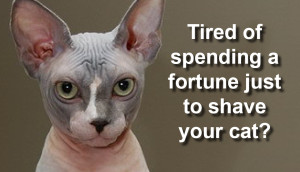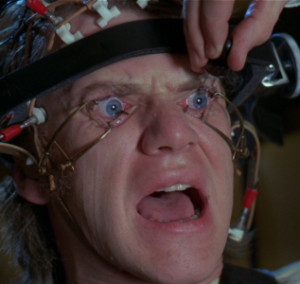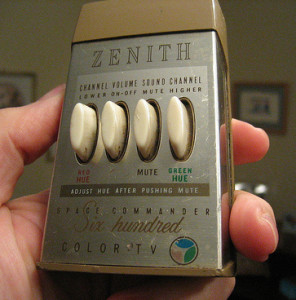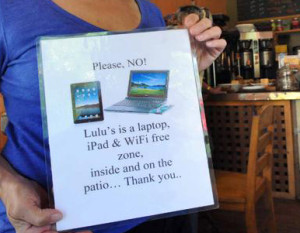 They say that even terrible people can serve a purpose, and that purpose, obviously, is to be the opposite of them. These people are anti-models. So I want to enumerate my rules on how to be a bad creative director, so you won’t be one yourself (should you find yourself in that office). Or, should you find yourself working for one, you’ll get out of there now. These rules should also help heads of agencies who have bad CDs working for them to recognize the symptoms and rectify it–with extreme prejudice.
They say that even terrible people can serve a purpose, and that purpose, obviously, is to be the opposite of them. These people are anti-models. So I want to enumerate my rules on how to be a bad creative director, so you won’t be one yourself (should you find yourself in that office). Or, should you find yourself working for one, you’ll get out of there now. These rules should also help heads of agencies who have bad CDs working for them to recognize the symptoms and rectify it–with extreme prejudice.
But before you dive into these rules, know this: I’ve obeyed every one at some point in my life. To my shame. Just ask the broken souls who have worked for me. But I did learn. (I hope I learned.) So, see? There’s hope.
Anyway, here are the rules for being a bad creative director:
1. Fire everybody and hire your friends.
I’ve seen this breed of CD a lot. This is the guy who, when hired from out of town to take over leadership of a creative department, proceeds to spend the next few months laying off the existing staff, one by one, like a dripping water torture, and bringing in old buddies from his last shop. This is extremely bad juju. Not only does it destroy morale of whoever is left, and therefore erodes creative productivity, it sets you up as corrupt, nepotistic jerk, a reputation that will stick to your GlassDoor profile like Crazy Glue.
Full confession: I’ve hired old friends myself. It’s hard not to, at least if they are good at their jobs and highly creative. Some great directors always use the same crew in making their movies. And that’s okay. A good team is worth preserving. But if that comes at the expense of chucking the staff of your new agency overboard, it’s just a dick move. So only do it if you’re so busy that you have to build on an existing creative department that’s overworked. Which is what I tried to do.
2. Hold creative competitions.
The industry term for this is a “clusterf***”. This usually happens with a new business pitch, when it’s all hands on deck and the agency is in panic mode. But since it’s never a fair competition–the “winning” idea is judged by you–it tends to drain morale. As your teams line up to your office to present you with their concepts, they feel like the biplanes trying to shoot down King Kong off of the Empire State Building. And if you’ve hired your friends (see Rule 1), all those who aren’t from your entourage feel like it’s rigged, and won’t give you their best. If you try to correct for this and award the winner to the legacy team, you’ll just piss off your friends, and you’ll worry about letting personal feelings cloud your creative judgment. Of course, you can fool yourself into thinking that that would never happen, that you’re completely objective, but–well–see Rule 5 below.
3. Have mass brainstorming sessions.
Creative meetings where everybody in the department (and the account executives too!) all hole up together to brainstorm ideas are the tell of a CD who hasn’t got a clue how creativity works. In the real world the muse comes for each art director or writer in their own way, using their own idiomatic techniques. Sitting for hours in a stuffy meeting room while an enthusiastic CD stands in front of a white board writing down ideas that are tossed up is usually on the bottom of that list of techniques. This method of idea formation works really well in Congress, but never in a creative department. (I’m being sarcastic, in case you can’t tell.)
4. Hog all the juicy assignments for yourself.
If you’re a creative director, and you work in an adequately staffed department, you have to get out of the trenches. Being a creative director is not just being a souped-up art director or writer. It’s being a leader. It is way too tempting to reserve the sexiest projects for yourself. But dole out the assignments and accounts fairly and evenly. Assuming you have hired really talented, skilled people, let them do their jobs. Trust them. And they’ll give your their best. Hell, they’ll stay late working on their best because they’ll feel ownership in their work.
5. Convince yourself that you have creative objectivity.
Really bad CDs talk themselves into this trap all the time; believing that their judgment in creative concepts is completely objective and that it’s simply the “best” idea that will win. And yet, somehow, the same golden team just keeps winning the competition time after time, even when the rest of the department thinks their ideas are crap. When I was starting out, I worked for this guy who was committed to the whole creative competition thing, believing that competition brought out the best in people. He had a little speech at the kickoff for each gladiatorial tournament, “This isn’t about favorites. It’s about the best idea. The best idea will stand out.” Then guess which “team’s” concept would always have the “best idea.” Go ahead, bet you can’t guess.
But if you’re a CD and admit to yourself that you’re human, and not objective even in your creative judgment, you’ll be able to avoid that trap. Just keep telling yourself that you have bias. Or that you like Kyle and Chad’s ideas because you guys go way back to when they worked for you at McCann.
6. Write long, rambling creative briefs with pages of irrelevant information.
Depending on the ad agency, the person whose job it is to actually write the creative brief might vary. In some agencies the creative director or creative group head does it. In others, it’s the account executive. In more enlightened shops it’s the account planner. It doesn’t matter; bad creative directors don’t pay attention to this brief anyway. They don’t even read them. (Who’s got time to read?) But if you come on board as an agency’s new CD, one of the first things you should do is look at and fine tune whatever they’ve been using as a creative brief format.
The criteria for a good creative brief are to be found hidden in its two descriptive words, “creative” and “brief.” Make sure it’s written with information that’s useful to the creative team. And make sure it’s brief; try for one page. But you should put together a format that anyone can fill out. That’s your first job. Day one.
(For reference on what a useful creative brief format looks like, you can use one I’ve lifted for years).
7. Micromanage your staff.
This is most frequently a fault of CDs who started off their careers as art directors, or worse, graphic designers. While taste and appropriateness in art direction are certainly important, leave those calls to the art directors who are working for you. Make sure you’ve got good ones. But don’t hold their wrists for them. Show them respect. Art direction or copywriting are not your job anymore. Unless, of course, your staff is so overworked that you need to pitch in, too. But make sure it’s “too” and not “instead.”
This is not to say that one of your jobs isn’t to mentor, or even just train young, inexperienced talent. But as a manager, you have to judge whether you have time for that, or whether you should put a neophyte under the wing of a more senior art director or writer. In doing that, you also mentor your more senior talent for their own leadership development.
8. Keep your mind closed.
Just because you can’t categorize an idea that’s presented to you, doesn’t mean it’s a bad idea. I once knew a creative director who used to say, “If it’s so original, how come I’ve never seen it before?” (To be fair, he only said it once–after we all laughed.) He also used to tell us, “The best idea is never the first one.” Good warning. So we’d always keep our best concepts to show him last.
Bad creative directors are always looking for concepts that are derivative of something they’ve seen. It’s like they have no imagination. Which begs the question, how did they ever become a creative director?
I have to say that this rule is the hardest to break. It is so tempting to look for the familiar or to imitate an old concept that’s somehow due for a revival. It’s probably why King Kong has been remade so many times.
9. Keep your door closed.
If you work in one of those old fashioned agencies with offices (at least for the officers), and if you want to be a bad creative director, be sure to stay unavailable. Keep that door closed.
If, on the other hand, you want to try to be a good CD, the only time you should close your door is when you’re changing into your superhero costume. Or you’re firing someone. Otherwise make yourself available all the time. In fact, don’t wait for them to come to you; circulate, look in on what people are doing, stay accessible to your team.
That same CD I once worked for in my youth (I’m not going to tell you who, they might still be alive and possibly reading my blog) made us a speech when he came on board, telling us his door was always open. Then he walked into his corner office and shut his door. Literally. It was always closed. And he used his administrative assistant to block access.
Was he a bad creative director? I wasn’t saying that.









